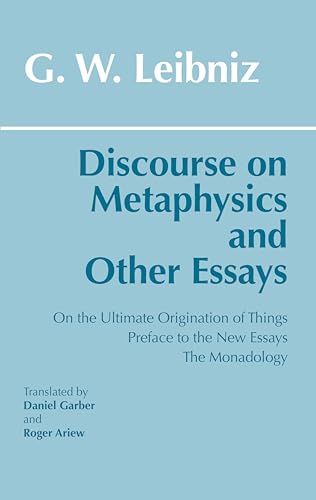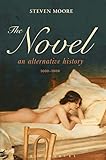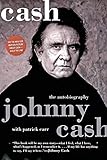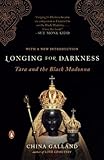1.
One of the most poignant of all passages in English literature occurs in The Life and Opinions of Tristram Shandy, Gentleman, serially published between the years of 1759 and 1767, when its author Laurence Sterne wrote: “████████████████████████████████████ ██████████████████████████████████████████████████████████████████████████████████████” Such is the melancholic shade of the 73rd page of Tristram Shandy, the entirety of the paper taken up with black ink, when the very book itself mourns the death of an innocent but witty parson with the Shakespearean name Yorick. Said black page appears after Yorick went to his doors and “closed them, – and never opened them more,” for it was that “he died… as was generally thought, quite broken hearted.”
Tristam Shandy is more than just an account of its titular character, for as Steven Moore explains in The Novel: An Alternative History 1600-1800, the English writer engaged subjects including “pedantry, pedagogy, language, sex, writing, obsessions… obstetrics, warfare and fortifications, time and memory, birth and death, religion, philosophy, the law, politics, solipsism, habits, chance… sash-windows, chambermaids, maypoles, buttonholes,” ultimately concluding that it would be “simpler to list what it isn’t about.” Sterne’s novel is the sort that spends a substantial portion of its endlessly digressive plot with the narrator describing his own conception and birth. As Tristam says of his story, “Digressions, incontestably, are the sunshine; – & they are the life, the soul of reading; – take them out of this book for instance, – you might as well take the book along with them.”
Eighteenth-century critics didn’t always go in for this sort of thing. Dr. Johnson, with poor prescience, said “Nothing odd will do long. Tristam Shandy did not last,” while Voltaire gave it a rather more generous appraisal, calling it “a very unaccountable book; an original.” Common readers were a bit more adventuresome; Moore records that the “sheer novelty of the first two volumes made Tristam Shandy a hit when they were reprinted in London in the early 1760s.” Sterne arguably produced the first “post-modern” novel, long before Thomas Pynchon’s Gravity’s Rainbow or David Foster Wallace’s Infinite Jest. Central to Tristam Shandy are its typographical eccentricities, which Michael Schmidt in The Novel: A Biography describes: “mock-marbling of the paper, the pointing hands, the expressive asterisks, squiggles, dingbats…the varying lengths of dashes.” None of those are as famous as poor Yorick’s pitch-black page, however.
It’s easy to see Sterne’s black page, its rectangle of darkness, as an oddity, an affectation, an eccentricity, a gimmick. This is woefully inconsiderate to English language’s greatest passage about the blankness of grief. Sober critics have a tendency to mistake playfulness with lack of seriousness, but a reading of Tristram Shandy shows that for all of its strangeness, its scatological prose and its metafictional tricks, Sterne’s goal was always to chart the “mechanism and menstruations in the brain,” as he explained, to describe “what passes in a man’s mind.”
Which is why Tristram Shandy’s infamous black page represents grief more truthfully than the millions of pages that use ink in a more conventional way. Sterne’s prose, or rather the gaping dark absence where prose normally would be, is the closest that he can get to genuinely conveying what loss’s void feels like. What’s clear is that no “reading” or “interpretation” of Yorick’s extinction can actually be proffered, no analysis of any human’s death can be translated into something rationally approachable. Sterne reminds us that grief is not amenable to literary criticism. For anyone that has ever lost someone they loved, seen that person die, you can understand that there is an inability for mere words to be commensurate with the enormity of that absence. Concerning such emotions beyond emotions, when it comes to “meaning,” the most full and accurate portrayal can only ever be a black hole.
2.
Black is the most parsimonious of all colors. Color is a question of what it is we’re seeing when contrasted with that which we can’t, and black is the null zero of the latter. Those Manichean symbolic associations that we have with black and white are culturally relative—they are contingent on the arbitrary associations that a people project onto colors. Yet true to the ballet of binary oppositions, they are intractably related, for one could never read black ink on black paper, or its converse. If with feigned synesthesia we could imagine what each color would sound like, I’d suspect that they’d either be all piercing intensity and high pitches, or perhaps low, barely-heard thrum—but I’m unsure which would be which.
Their extremity is what haunts, allowing either only absorption or only reflection, the two colors reject the russet cool of October and the blue chill of December, or the May warmth of yellow and the July heat of red. Black and white are both voids, both absences, both spouses in an absolutism. They are singularities. Hardly anything is ever truly black, even the night sky awash in the electromagnetic radiation of all those distant suns. Black and white are abstractions, they are imagined mathematical potentials, for even the darkest of shades must by necessity reflect something back. Save for one thing—the black hole.

As early as 1796 the Frenchman Pierre-Simon Laplace conjectured the existence of objects with a gravitational field so strong that not even light could escape. Laplace, when asked of God, famously told Napoleon that he “had no need for that hypothesis,” but he knew of the black hole’s rapacious hunger. It wouldn’t be until 1916 that another scientist, the German Karl Schwarzschild, would use Albert Einstein’s general theory of relativity to surmise the existence of the modern black hole. Physicist Brian Greene explains in The Elegant Universe that Schwarzschild’s calculations implied objects whose “resulting space-time warp is so radical that anything, including light, that gets too close… will be unable to escape its gravitational grip.”
Black holes were first invented as a bit of mathematical book-keeping, a theoretical concept to keep God’s ledger in order. However, as Charles Seife writes in Alpha and Omega: The Search for the Beginning and End of the Universe, though a “black hole is practically invisible, astronomers can infer its presence from the artifacts it has on spacetime itself.” Formed from the tremendous power of a supernova, a blackhole is a lacuna in space and time, the inky corpse of what was once a star, and an impenetrable passage from which no traveler may return.
A black hole is the simplest object in the universe. Even a hydrogen atom is composed of a proton and an electron, but a black hole is simply a singularity and an event horizon. The former is the infinitely dense core of a dead star, the ineffable heart of the darkest thing in existence, and the latter marks the point of no return for any wayward pilgrim. It’s at the singularity itself where the very presuppositions of physics breakdown, where our mathematics tells us that reality has no strictures. Though a black hole may be explained by physics, it’s also paradoxically a negation of physics. Obvious why the black hole would become such a potent metaphor, for physics has surmised the existence of locations for which logic has no dominion. A cosmological incognito if you will, where there be monsters.
God may not play dice with the universe, but as it turns out She is ironic. Stephen Hawking figured that the potent stew of virtual particles predicted by quantum mechanics, general relativity’s great rival in explaining things, meant that at the event horizon of a black hole there would be a slight escape of radiation, as implied by Werner Heisenberg’s infamous uncertainty principle. And so, from Hawking, we learn that though black may be black, nothing is ever totally just that, not even a black hole. Save maybe for death.
3.
“Black hole” is the rare physics term that is evocative enough to attract public attention, especially compared to the previous phrase for the concept, “gravitationally collapsed object.” Coined by physicist Robert H. Dicke in the early ’60s, he appropriated it from the infamous dungeon in colonial India that held British prisoners and was known as the “Black Hole of Calcutta.” In Dicke’s mind, that hot, fetid, stinking, torturous hell-hole from which few men could emerge was an apt metaphor for the cosmological singularity that acts as a physical manifestation of Dante’s warning in Inferno to “Abandon hope all ye who enter here.”
Dante was a poet, and the word “black hole” is a metaphor, but it’s important to remember that pain and loss go beyond language, they are not abstractions, but very real. That particular Calcutta hole was in actuality an 18-foot by 14-foot cell in the ruins of Ft. William that held 69 Indian and British soldiers upon the fall of that garrison in 1756, when it was taken by the Nawab of Bengal. According to a survivor of the imprisonment, John Zephaniah Howell, the soldiers “raved, fought, prayed, blasphemed, and many then fell exhausted on the floor, where suffocation put an end to their torments.” On the first night 46 of the men died.
In Marcus Redicker’s The Slave Ship: A Human History, the scholar speaks of the “horror-filled lower deck,” a hell of “hot, crowded, miserable circumstances.” A rare contemporary account of the Middle Passage is found in the enslaved Nigerian Olaudah Equiano’s 1789 The Interesting Narrative of Olaudah Equiano, Or Gustavus Vassa, The African. Penned the year that French Jacobins stormed the Bastille, Equiano’s account is one of the rare voices of the slave ship to have been recorded and survived, an account of one who has been to a hell that they did not deserve and who yet returned to tell tale of that darkness. Equiano described being “put down under the decks” where he “received such a salutation in my nostrils as I had never experience in my life: so that, with the loathsomeness of the stench, and crying together, I became so sick and low that I was not able to eat…I now wished for the last friend, death.”


There’s a risk in using any language, any metaphor, to describe the singularities of suffering endured by humans in such places, a tendency to turn the lives of actual people into fodder for theorizing and abstraction. Philosopher Elaine Scary in The Body in Pain: The Making and Unmaking of the World argues that much is at “stake in the attempt to invent linguistic structures that will reach and accommodate this area of experience normally so inaccessible to language… a project laden with practical and ethical consequence.” Any attempt to constrain such experience in language, especially if it’s not the author’s experience, runs a risk of limiting those stories. “Black hole” is an affective metaphor to an extent, in that implicit within it is the idea of logic and language breaking down, and yet it’s all the more important to realize that it is ultimately still a metaphor as well, what the Soviet dissident Aleksandr Solzhenitsyn in The Gulag Archipelago described as “the dark infinity.”

David King in The Commissar Vanishes: The Falsification of Photographs and Art in Stalin’s Russia provides a chilling warning about what happens when humans are reduced to such metaphor, when they are erased. King writes that that the “physical eradication of Stalin’s political opponents at the hands of the secret police was swiftly followed by their obliteration from all forms of pictorial existence.” What’s most disturbing are the primitively doctored photographs, where being able to see the alteration is the very point. These are illusions that don’t exist to trick, but to warn; their purpose is not to make you forget, but rather the opposite, to remind you of those whom you are never to speak of again. Examine the Damnatio memoriae of Akmal Ikramov, first secretary of the Communist Party of Uzbekistan, who was condemned by Stalin and shot. In the archives his portrait was slathered in black paint. The task of memory is to never forget that underneath that mask there was a real face, that Ikramov’s eyes looked out as yours do now.
4.
Even if the favored color of the Bolsheviks was red, black has also had its defenders in partisan fashion across the political spectrum, from the Anarchist flag of the left to the black-shirts of Benito Mussolini’s fascist right and the Hugo Boss-designed uniforms of the Nazi SS. Drawing on those halcyon days of the Paris Commune in 1871, anarchist Louis Michel first flew the black flag at a protest. His implications were clear—if a white flag meant surrender, then a black flag meant its opposite. For all who wear the color black certain connotations, sometimes divergent, can be potentially called upon; including authority, judiciousness, piety, purity, and power. Also, black makes you look thinner.

Recently departed fashion designer, creative director for the House of Chanel, and noted Teutonic vampire Karl Lagerfeld once told a Harper’s Baazar reporter that “Black, like white, is the best color,” and I see no reason to dispute that. Famous for his slicked-back powdered white pony-tail, his completely black suits, starched white detachable collars, black sunglasses, and leather riding gloves, Lagerfeld is part of a long tradition of that fabled French design firm. Coco Chanel, as quoted in The Allure of Chanel by Paul Morand and Euan Cameron, explains that “All those gaudy, resuscitated colors shocked me; those reds, those greens, those electric blues.” Chanel explains rather that she “imposed black; it’s still going strong today.”
Black may be the favored monochromatic palette for a certain school of haute couture; think black tie affairs and little black cocktail dresses—but the look is too good to be left to the elite. Black is the color of bohemians, spartan simplicity as a rebellion against square society. Beats were associated with it, they of stereotypical turtlenecks and thick-framed glasses. It’s always been a color for the avant-garde, signifying a certain austere rejection of the superficial cheerfulness of everyday life. Beats like Allen Ginsberg in his epic poem Howl, with its memorable black cover from City Lights Books, may have dragged himself through the streets at dawn burning for that “ancient heavenly connection to the starry dynamo,” but his friend William S. Burroughs would survey the fashion choices of his black-clad brethren and declare that the Beats were the “movement which launched a million Gaps.”


Appropriated or not, black has always been the color of the outlaw, a venerable genealogy that includes everything from Marlon Brando’s leather jacket in The Wild One to Keanu Reeves’s duster in The Matrix. Fashionable villains too, from Dracula to Darth Vader. That black is the color of rock music, on its wide highway to hell, is a given. There is no imagining goth music without black’s macabre associations, no paying attention to a Marilyn Manson wearing khaki, or the Cure embracing teal. No, black is the color of my true love’s band, for there’s no Alice Cooper, Ozzy Osbourne, or the members of Bauhaus in anything but a monochromatic darkness. When Elvis Presley launched his ’68 comeback he opted for a skin-tight black leather jumpsuit.
Nobody surpasses Johnny Cash though. The country musician is inextricably bound to the color, wearing it as a non-negotiable uniform that expressed radical politics. He sings “I wear the black for the poor and the beaten down, /Livin’ in the hopeless, hungry side of town.” Confessing that he’d “love to wear a rainbow every day,” he swears allegiance to his millennial commitments, promising that he’ll “carry off a little darkness on my back, /’Till things are brighter, I’m the Man in Black.” Elaborating later in Cash: The Autobiography, cowritten with Patrick Carr, he says “I don’t see much reason to change my position today…There’s still plenty of darkness to carry off.”
Cash’s sartorial choices were informed by a Baptist upbringing; his clothes mourned a fallen world, it was the wardrobe of a preacher. Something similar motivates the clothing of a very different prophetic figure, the pragmatist philosopher Cornel West, who famously only wears a black three-piece suit, with matching scarf. In an interview with The New York Times, West calls the suit his “cemetery clothes,” with a preacher’s knowledge that one should never ask for whom the bell tolls, but also with the understanding that in America, the horrifying reality is that a black man may always need to be prepared for his own funeral when up against an unjust state. As he explained, “I am coffin-ready.” West uses his black suit, “my armor” as he calls it, as a fortification.
Black is a liturgical, sacred, divine color. It’s not a mistake that Cash and West draw from the somber hue of the minister’s attire. Black has often been associated with orders and clerics; the Benedictines with their black robes and Roman collared Jesuits; Puritans and austere Quakers, all unified in little but clothing. Sects as divergent as Hasidic Jews and the Amish are known for their black hats. In realms of faith, black may as well be its own temple.
5.
Deep in the Finsterwalde, the “Dark Forest” of northwestern Switzerland, not far from Zurich, there is a hermitage whose origins go back to the ninth century. Maintained by Benedictine monks, the monastery was founded by St. Meinard. The saint lived his life committed to solitude, to dwelling in the space between words that can stretch to an infinity, a black space that still radiates its own light. In his vocation as a hermit, where he would find the monastery known (and still known) as the Einsiedeln Abbey, he had a single companion gifted to him by the Abbes Hildegard of Zurich—a carved, wooden statue of the Virgin Mary holding the infant Christ, who was himself clutching a small bird as if it was his play companion.
For more than a millennium, that figure, known as the “Lady of Einsiden,” has been visited by millions of pilgrims, as the humble anchorage has grown into a complex of ornate, gilded baroque buildings. These seekers are drawn to her gentle countenance, an eerie verisimilitude projecting some kind of interiority within her walnut head. She has survived both the degradations of entropy and Reformation, and is still a conduit for those who travel to witness that material evidence of that silent world beyond. Our Lady of Einsiden is only a few feet tall; her clothing is variable, sometimes wearing the celestial, cosmic blue of the Virgin, other times in resplendent gold, but the crown of heaven is always upon her brow. One aspect of her remains unchanging, however, and that’s that both her and Christ are painted black.
In 1799, during a restoration of the monastery, it was argued, in the words of one of the workers, that the Virgin’s “color is not attributable to a painter.” Deciding that a dose of revisionism was needed alongside restoration, the conclusion of restorer Johann Adam Fuetscher was that the Mary’s black skin was the result of the “smoke of the lights of the hanging lamps which for so many centuries always burned in the Holy Chapel of Einsideln.”
Fuetscher decided to repaint the statue, but when visitors saw the new Virgin they were outraged, and demanded she be returned to her original color, which has remained her hue for more than 200 years. Our Lady of Einsideln was not alone; depictions of Mary with dark skin can be found the width and breadth of the continent, from the famed Black Madonna of Czestochowa in Poland to Our Lady of Dublin in the Whitefriar Street Carmelite Church; in the Sicilian town of Tindari, to the frigid environs of Lunds Domkyrka Lund Cathedral in Sweden. Depending on how one identifies the statues, there are arguably 500 medieval examples of the Virgin Mary depicted with dark skin.
Recently art historians have admitted that the hundreds of Black Madonnas are probably intentionally so, but there is still debate as to why she is so often that color. One possibility is that the statues are an attempt at realism, that European artists saw no compunctions about rendering the Virgin and Christ with an accurate skin-tone for Jews living in the Levant. Perhaps basing such renderings upon the accounts of pilgrims and crusaders who’d returned from the Holy Land, these craftsmen depicted the Mother of God with a face that wasn’t necessarily a mirror of their own.
Scholar Lucia Chiavola Birnbaum has her own interpretation of these carvings in her study Black Madonnas: Feminism, Religion, and Politics in Italy. For Birnbaum, the statues may represent a multicultural awareness among those who made them, but they also have a deep archetypal significance. She writes that “Black is the color of the earth and of the ancient color of regeneration, a matter of perception, imagination, and beliefs often not conscious, a phenomenon suggested in people’s continuing to call a madonna black even after the image had been whitened by the church.”
China Galland in Longing for Darkness: Tara and the Black Madonna, her account of global pilgrimage from California to Nepal, asks if there was in the “blackness of the Virgin a thread of connection to Tara, Kali, or Durga, or was its mere coincidence?” These are goddesses, which as Galland writes, have a blackness that is “almost luminous,” beings of a “beneficent and redeeming dark.” Whatever the motivations of those who made the statues, it’s clear that they intended to depict them exactly as they appear now, candle smoke and incense besides. At the il Santuario della Madonna del Tindari in Sicily there is a celebrated Virgin Mary with dark skin. And just to dispel any hypothesis that her color is an accident, restorers in 1990 found inscribed upon her base a quotation from Song of Songs 1:5, when the Queen of Sheba declares to Solomon: “I am black but beautiful.”
6.
Very different deities of darkness would come to adorn the walls of the suburban Madrid house that the Spanish painter Francisco Goya moved to 200 years ago, in the dusk of the Napoleonic conflicts (when Laplace had dismissed God). Already an old man, and deaf for decades, Goya would affix murals in thick, black oil to the plaster walls of his villa, a collection intended for an audience of one. As his biographer Robert Hughes would note in Goya, the so-called black paintings “revealed an aspect of Goya even more extreme, bizarre, and imposing” than the violent depictions of the Peninsular War for which he was famous. The black paintings were made for Goya’s eyes only. He was a man who’d witnessed the barbarity of war and inquisition, and now in his convalescence he chose to make representations of witches’ sabbaths and goat-headed Baphomet overseeing a Black Mass, of Judith in the seconds after she decapitated Holofernes, and of twisted, toothless, grinning old men. And, though now it hangs in the Museo del Prado, it was painted originally on the back wall of the first story of the Quinta del Sordo next to one window and perpendicular to another, was his terrifying depiction of a fearsome Saturn devouring his own young.
In the hands of Goya, the myth of the Titan who cannibalized his progeny is rendered in stark, literal, horrifying reality. For Goya there is no forgetting the implications of what that story implies, his Chronos appears as shaggy, wild-eyed, orangish monstrosity; matted, bestial white hair falls uncombed from his head, and past his scrawny shoulders. Saturn is angular, jutting bones and knobby kneecaps, as if hunger has forced him to this unthinkable act. His eyes are wide, and though wild, they’re somehow scared, dwelling in the darkness of fear.
I wonder if that’s part of Goya’s intent, using this pagan theme to express something of Catholic guilt and death-obsession, that intuitive awareness of original sin. It makes sense to me that Saturn is the scared one; scared of what he’s capable of, scared of what he’s done. Clutching in both hands the dismembered body of a son, whose features and size are recognizably human, Chronos grips his child like a hoagie, his son’s right arm already devoured and his head in Saturn’s stomach, with the Titan biting directly into the final remaining hand. Appropriately enough for what is, after all, an act of deicide, the sacrificed god hangs in a cruciform position. A fringe of blood spills out from inside. His corpse has a pink flush to it, like a medium rare hamburger. That’s the horror of Chronos—of time—emerging from this undifferentiated darkness. When considering our final hour, time has a way of rendering the abstraction of a body into the literalism of meat. Saturn Devouring His Son hung in Goya’s dining room.
His later paintings may be the most striking evocation of blackness, but the shade haunted Goya his entire life. His print The Sleep of Reason Produces Monsters, made two decades before those murals in the Quinta del Sordo, is a cross-hatched study of the somber tones, of black and grey. Goya draws himself, head down on a desk containing the artist’s implements, and above him fly the specters of his nocturnal imagination, bats and owls flapping their wings in the ceaseless drone that is the soundtrack of our subconscious irrationalities, of the blackness that defines that minor form of extinction we call sleep.

7.
The blackness of sleep both promises and threatens erasure. In that strange state of non-being there is an intimation of what it could mean to be dead. Telling that darkness is the most applicable metaphor when describing both death and sleep, for the bed or the coffin. Sigmund Freud famously said of his subject in The Interpretation of Dreams that they were the “royal road to the unconscious.” Even the laws of time and space seem voided within that nocturnal kingdom, where friends long dead come to speak with us, where hidden rooms are discovered in the dark confines of homes we’ve known our entire lives. Dreams are a singularity of sorts, but there is that more restful slumber that’s nothing but a calm blackness.

This reciprocal comparison between sleep and death is such a cliché precisely because it’s so obvious, from the configuration of our actual physical repose to our imagining of what the experiences might share with one another. Edmund Spenser in the Faerie Queene writing “For next to Death is Sleepe to be compared;” his contemporary the poet Thomas Sackville referring to sleep as the “Cousin of Death;” the immaculate Thomas Browne writing that sleep is the “Brother of Death;” and more than a century later Percy Shelley waxing “How wonderful is Death, Death and his brother Sleep!”
Without focusing too much on how the two have moved closer to one another on the family tree, what seems to unify tenor and vehicle in the metaphorical comparisons between sleep and death is this quality of blackness, non-existence of color the same as non-existence. Both imply a certain radical freedom, for in dreams everyone has an independence, at least for a few hours. Consider that in our own society, where our totalizing system is the consumerism which controls our every waking moment, that the only place where you won’t see anything designed by humans (other than yourself) is in dreams, at least until Amazon finds a way to beam advertisements directly into our skulls.



Then there is Shakespeare, who speaks of sleep as the “ape of death,” who in Hamlet’s monologue writes of the “sleep of death,” and in the Scottish play calls sleep “death’s counterfeit.” If centuries have a general disposition, then my beloved 17th century was a golden age of morbidity when the ars Moriendi of the “good death” was celebrated by essayists like Browne and Robert Burton in the magisterial Anatomy of Melancholy. In my own reading and writing there are few essayists whom I love more, or try to emulate more, than the good Dr. Browne. That under-read writer and physician, he who both coined the terms “literary” and “medical,” among much else besides, wrote one of the most moving and wondrous tracts about faith and skepticism in his 1642 Religio Medici. Browne writes “Sleep is a death, /O make me try, /By sleeping, what it is to die:/And as gently lay my head/On my grave, as now my bed.” Maybe it resonates with me because when I was (mostly) younger, I’d sometimes lay on my back and pretend that I was in my coffin. I still can only sleep in pitch blackness.
8.
Far easier to imagine that upon death you go someplace not unlike here, in either direction, or into the life of some future person yet unborn. Far harder to imagine non-existence, that state of being nothing, so that the most accessible way that it can be envisioned is as a field of black, as being the view when you close your eyes. That’s simply blackness as a metaphor, another inexact and thus incorrect portrayal of something fundamentally unknowable. In trying to conceive of non-existence, blackness is all that’s accessible, and yet it’s a blackness where the very power of metaphor ceases to make sense, where language itself breaks down as if it were the laws of physics at the dark heart of the singularity.
In the Talmud, at Brachot 57b, the sages tell us that “Sleep is 1/60th of death,” and this equation has always struck me as just about right. It begs certain questions though: is the sleep that is 1/60th of death those evenings when we have a pyrotechnic, psychedelic panoply of colors before us in the form of surrealistic dreams, or is it the sleep we have that is blacker than midnight, devoid of any being, of any semblance of our waking identities? This would seem to me to be the very point on which all questions of skepticism and faith must hang. That sleep, that strangest of activities, for which neurologists still have no clear answers as to its necessities (though we do know that it is), is a missive from the future grave, a seven-hour slice of death, seems obvious to me. So strange that we mock the “irrationalities” of ages past, when so instrumental to our own lives is something as otherworldly as sleep, when we die for a third of our day and return from realms of non-being to bore our friends with accounts of our dreams.
When we use the darkness of repose as metaphor for death, we brush against the extremity of naked reality and the limitations of our own language. In imagining non-existence as a field of undifferentiated black, we may trick ourselves into experiencing what it would be to no longer be here, but that’s a fallacy. Black is still a thing. Less than encouraging, this inability to conceive of that reality, which may be why deep down all of us, whether we’re to admit it or not, are pretty sure that we’ll never die, or at least not completely. And yet the blackness of non-existence disturbs, how couldn’t it? Epicurus wrote as an argument against fear of our own mortality that “Death… is nothing to us, seeing that, when we are, death is not come, and, when death is come, we are not.”
Maybe that’s a palliative to some people, but it’s never been to me. More of sophistry than wisdom in the formulation, for it eludes the psychology of being terrified at the thought of our own non-existence. Stoics and Epicureans have sometimes asked why we’re afraid of the non-existence of death, since we’ve already experienced the non-existence before we’re born? When I think back to the years before 1984, I don’t have a sense of an undifferentiated blackness, rather I have a sense of…. well…. nothing. That’s not exactly consoling to me. Maybe this is the height of egocentricity, but hasn’t anyone ever looked at photographs of your family from before you’re born, and felt a bit of the uncanny about it? Asking for a friend.


In 1714, the German philosopher Gottfried Wilhelm Leibnitz asked in the Monadology “Why is there something rather than nothing,” and that remains the rub. For Martin Heidegger in the 20th century, that issue remained the “fundamental question of metaphysics.” I proffer no solution to it here, only to notice that when confronted with the enormity of non-existence, prudence forces us to admit the equivalently disturbing question of existence. Physicist Max Delbrück in Mind from Matter: An Essay on Evolutionary Epistemology quotes his colleague Niels Bohr, the father of quantum theory, as having once said that the “hallmark of any deep truth [is] that its negation is also a deep truth.” Certainly, the case with existence and non-existence, equally profound and equally disquieting. If we’re to apply colors to either, I can’t help but see oppositional white and black, with an ambiguity to which is which.
9.
If there can be a standard picture of God, I suspect that for most people it is a variation on the bearded, old man in the sky trope, sort of a more avuncular version of Michelangelo’s rendering from the Sistine Chapel ceiling. Such is an embodied deity, of dimensions in length, breadth, and width, and also such is the Lord as defined through that modern heresy of literalism. The ancients were often more sophisticated than both our fundamentalists and our atheists (as connected as black and white). Older methods of speaking about something as intractable as God were too often pass over in silence, with an awareness that to limit God to mere existence was to limit too much.
In that silence there was the ever-heavy blossom of blackness, the all-encompassing field of darkness that contains every mystery to which there aren’t even any questions. Solzhenitsyn observed that “even blackness [can]… partake of the heavens.” Not even blackness, but especially blackness, for dark is the night. Theologians call this way of speaking about God “apophasis.” For those who embrace apophatic language, there is an acknowledgement that a clear definition of the divine is impossible, so that it is better to dwell in sacred, uncertainties. This experience of God can often be a blackness in itself, what St. John of the Cross spoke of in his 1577 Spanish poem “The Dark Night of the Soul.” Content with how an absence can often be more holy than an image, the saint emphasized that such a dark night is “lovelier than the dawn.” A profound equality in undifferentiated blackness, in that darkness where features, even of God, are obscured. Maybe the question of whether or not God is real is as nonsensical as those issues of non-existence and death; maybe the question itself doesn’t make any sense, understanding rather that God isn’t just black. God is blackness.
10.
On an ivory wall within the National Gallery, in Andrew Mellon’s palace constructed within this gleaming white city, there is a painting made late in life by Mark Rothko entitled Black on Grey. Measuring some 80 inches by 69.1 inches, the canvas is much taller than the average man, and true to its informal title it is given over to only two colors—a dark black on top fading into a dusty lunar grey below. Few among Rothko’s contemporaries in his abstract expressionist circle, that movement that moved the capital of the art world from Paris to New York, had quite the sublimity of color as he did. Jackson Pollock certainly had the kinetic frenzy of the drip, Willem de Kooning the connection to something still figurative in his pastel swirl. But Rothko, he had a panoply of color, from his nuclear oranges and reds to those arctic blues and pacific greens, what he described to Selden Rodman in Conversations with Artists as a desire to express “basic human emotions—tragedy, ecstasy, doom.”
Black on Grey looks a bit like what I imagine it would be to survey the infinity of space from the emptiness of the moon’s surface. These paintings towards the end of the artist’s life, made before he committed suicide by barbiturate and razor blade in his East 69th Street studio, took an increasingly melancholic hue. Perhaps Rothko experienced what his friend the poet Frank O’Hara had written about as the “darkness I inhabit in the midst of sterile millions.” Rothko confirmed that his black paintings were, as with Goya, fundamentally about death.
In a coffee-table book, Rothko’s work can look like something from a paint sample catalog. It does no justice compared to standing before the images themselves, of what Rothko described as the phenomenon of how “people break down and cry when confronted with my pictures.” For Rothko, such reactions were a type of communion, these spectators were “having the same religious experience I had when I painted them.” When you stand before Black on Grey, when it’s taken out from the sterile confines of the art history book or the reductions of digital reproduction, you’re confronted with a blackness that dominates your vision, as seeing with your eyes closed, as experiencing death, as standing in the empty Holy of Holies and seeing God.
With a giant field of black, the most elemental abstraction that could be imagined, this Jewish mystic most fully practiced the stricture to not make any graven image. He paradoxically arrived at the most accurate portrayal of God ever committed to paint. For all of their oppositions, both Infinity and Nothing become identical, being the same shade of deep and beautiful black, so that any differences between them are rendered moot.
Image credit: Unsplash/David Jorre.



























